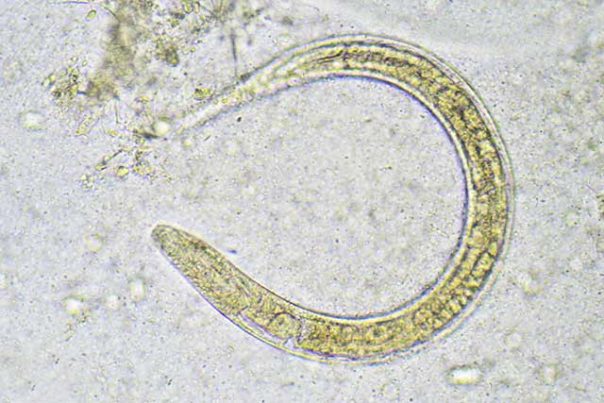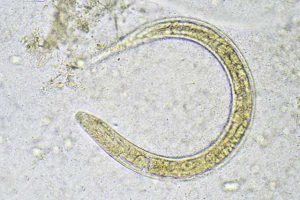
Strongyloidiasis – causes, side effects and treatments at NaturalPedia.com
Wednesday, August 08, 2018 by Ralph Flores
http://www.naturalpedia.com/strongyloidiasis-causes-side-effects-and-treatments-at-naturalpedia-com.html

Strongyloidiasis refers to the chronic infection caused by the parasite Strongyloides stercoralis. The condition affects over 100 million people around the world; however, these figures could be precise data on prevalence in endemic countries are unclear. In particular, strongyloidiasis is mainly found in tropical and subtropical regions, but it can also occur in endemic areas.
Strongyloidiasis is acquired upon contact with contaminated soil (e.g., walking barefoot). Poor hygiene increases the risk of infection, especially in children. If not treated, the condition may persist for life. This allows Strongyloides larvae to penetrate the skin, where it will mature into adults after reaching the intestine. Strongyloides larvae are peculiar: Unlike other nematodes, where these are excreted, Strongyloides may reinfect the intestine or perianal skin, a condition called “autoinfection cycle.”

Known risk factors and symptoms of strongyloidiasis
For the most part, strongyloidiasis is asymptomatic. However, those with an autoinfection often develop a rash around the anus, which spreads to the buttocks and thighs and causes itching. If the lung or the digestive tract is infected, symptoms such as coughing and wheezing are observed. Other symptoms may include abdominal pain and tenderness, diarrhea, nausea, and vomiting. The infection can also cause a dysfunction in nutrient absorption, which can result in weight loss.
Body systems affected by strongyloidiasis
In severe cases, strongyloidiasis damage the lungs and the digestive tract. This can lead to complications ranging from respiratory failure, internal bleeding, intestinal blockage, to malabsorption. If strongyloidiasis reaches the central nervous system, this can result in meningitis – or hepatitis if it reaches the liver. Life-threatening complications include sepsis (a severe blood infection) and peritonitis (the infection of the abdominal cavity).
For those with compromised immune systems, the condition could be fatal, even after treatment.
Food items or nutrients that may prevent or relieve strongyloidiasis
Some food items that can expel intestinal worms (including Strongyloides) include:
- Coconuts
- Garlic
- Unripe papaya
- Pumpkin seeds
- Carom seeds
- Pomegranate tree bark
Treatment and management options for strongyloidiasis
Strongyloidiasis requires immediate treatment upon diagnosis, whether or not symptoms are present, to reduce the possibility of severe infection in the future. Some medications include ivermectin and albendazole. Itching, a common symptom of infection is also treated as well. For those who are immunocompromised, hospital admission and intensive care are typical options provided for by a healthcare professional.
Where to learn more
Summary
Strongyloidiasis is a chronic infection caused by the parasite Strongyloides stercoralis.
Strongyloidiasis affects over 100 million people around the world.
Strongyloidiasis is acquired upon contact with contaminated soil.
Strongyloides larvae can reinfect intestine or perianal skin, a condition called “autoinfection cycle.”
Most strongyloidiasis cases are asymptomatic.
Complications of strongyloidiasis affect the lungs and the digestive tract.
Strongyloidiasis could be fatal for those with compromised immune systems.
Strongyloidiasis requires immediate treatment upon diagnosis, whether or not symptoms are present, to reduce the possibility of severe infection in the future.
Sources include:
Tagged Under: Tags: Strongyloidiasis





